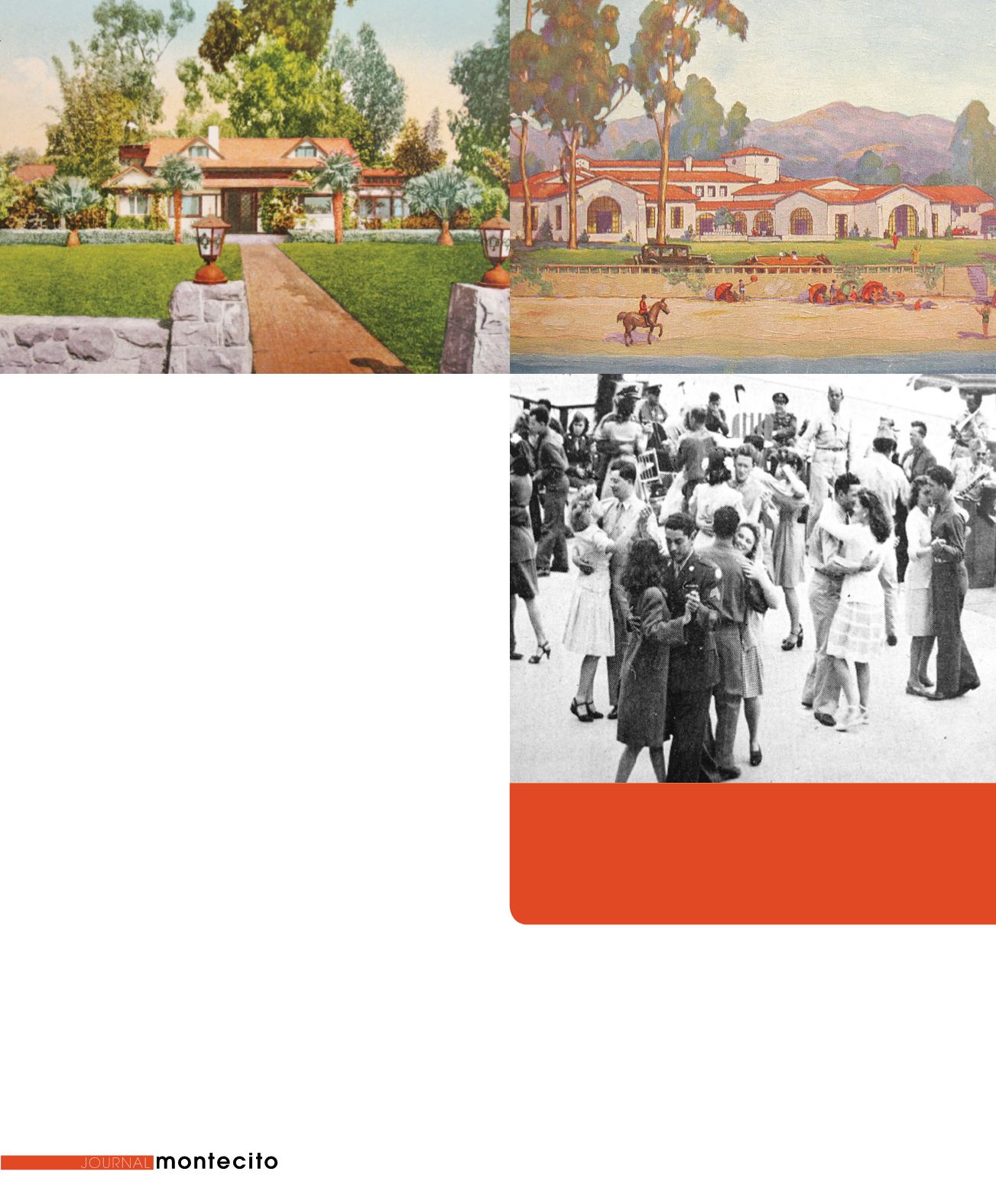
summer
|
fall
109
Mediterranean, and Italian architecture, but, said Johnson, “is not any
of those because it is modern and a new evolution in architecture.”
The builder of the hotel was P. J. Walker Company of Los Angeles,
who had constructed the Clift Hotel in San Francisco. What they built
in Montecito was a rambling complex that resembled a small village
anchored by a manor house or palace.
Elements of historic styles were used with restraint. Arched entries
to arcades, flying breezeways and exterior staircases led to loggias
and wrought-iron balconies. Wrought-iron fixtures, tiled risers and
wainscoting, and terracotta floors evinced the feel of Old Spain.
Several colorful tiled murals portrayed scenes from early days in
Santa Barbara. A map of Spanish Santa Barbara, the discovery of the
Santa Barbara Channel by Cabrillo, scenes featuring festive senoritas
and caballeros, and the Biltmore galleon adorned the porticos.
Inside, the white walls of the rooms were punctuated by colorful
fabrics, hand-carved furnishings, and rugs woven in Spain. Bottle-glass
windows, rambling hallways, and massive carved doors gave a sense
of intimacy, solidity, and nostalgia. With construction beginning only
a year after the earthquake, the heavily trussed beams, such as those
in the Santa Barbara County Courthouse, were made of reinforced
concrete, painted and impressed to look like wood.
Rooms on the American Plan started at $12 a night, and special
dining rooms and sleeping quarters were arranged for chauffeurs and
maids traveling with guests. Orchestra music accompanied lunch and
dinner, and every guest room had a cookie jar that was perpetually
filled with ginger cookies. Rooms featured the latest modern amenities
such as rubberized shower curtains and special slots for razor blades.
Recreation was provided by a swimming pool adjacent to
Gull
Cottage,
which had become the Biltmore Beach Club, as well as tennis
courts and bowling greens.
Inellan
, which had been renamed
Rose
and
later
Anacapa,
as well as
La Chiquita,
ended up being named
Cabrillo
Cottage,
and became two of seven cottages for rent.
Landmarks
(top left)
The Douglas place became one of the cottages belonging to the
Santa Barbara Biltmore
(top right)
Oil painting of the newly constructed Santa
Barbara Biltmore graced the cover of the 1928 souvenir booklet
(above)
The
Redistribution Center organized tea dances at the Coral Casino
(All photos Courtesy Santa Barbara Historical Museum)


